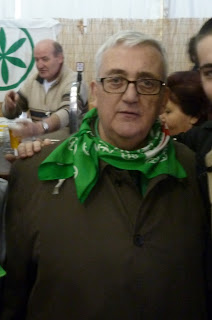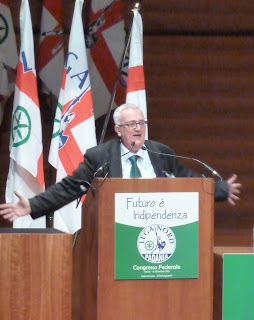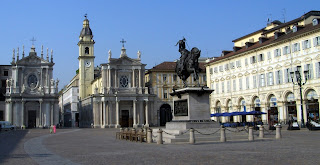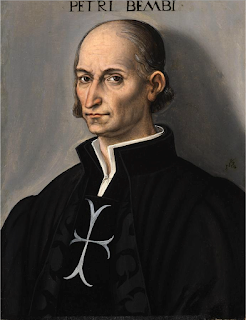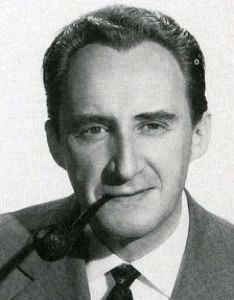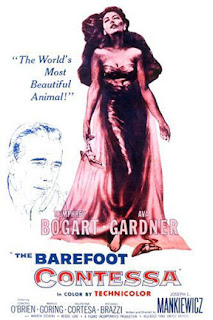Designer who made mark in Italy and abroad
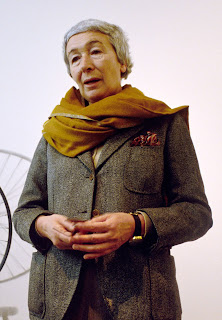 |
| Gae Aulenti forged a career in design when female architects were rare |
In a broad and varied career, among a long list of clients Aulenti
designed showrooms for Fiat and Olivetti, furniture for Zanotta, department
stores for La Rinascente, a railway station in Milan, stage sets for theatre and opera director Luca Ronconi and villas for wealthy private clients.
She lectured at the Venice and Milan Schools of Architecture
and was on the editorial staff of the design magazine, Casabella.
Yet she is best remembered for her part in transforming redundant
buildings facing possible demolition into museums and galleries, her most memorable
project being the interior of the Beaux Arts-style Gare d'Orsay railway station
in Paris, where she turned the cavernous central hall, a magnificent shed lit
by arching rooflights, into a minimalist exhibition space for impressionist
art.
Aulenti also created galleries at the Pompidou Centre in
Paris and the Palau Nacional in Barcelona
as well as turning San Francisco’s Beaux Art Main Library into a Museum of
Asian Art.
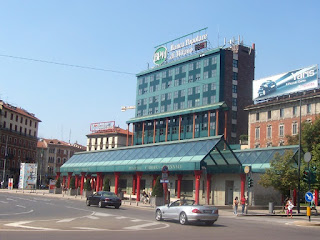 |
| The frontage of Milan's Cadorna railway station was restored in 1999 to a design by Gae Aulenti |
Aulenti was born Gaetana Aulenti in Palazzolo dello Stella,
in the region of Fruili-Venezia Giulia, a town through which the Stella river
passes a few kilometres north of the Laguna di Marano. At home, she read and learned the piano and
it was because her parents had no ambitions for her beyond finding an eligible
husband that she was determined to forge her own path in life. She went to Milan and enrolled at the Milan
School of Architecture at the Polytechnic University.
When she graduated, one of only two women in a class
of 20, she set up a private practice in Milan and joined the staff of Casabella
magazine.
She became part of a Neo-Liberty movement, reacting against
the growing dominance of modernism and arguing for a revival of local building
traditions and individual expression.
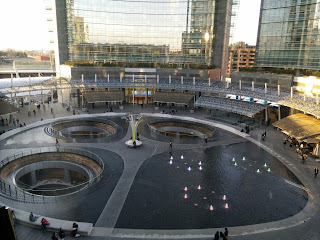 |
| Piazza Gae Aulenti is part of Porta Nuova Garibaldi renovation project in central Milan |
For Olivetti she created shop windows for showrooms in Paris
and Buenos Aires, where with the skilful use of mirrored steps she produced a
display of typewriters that wrapped around a street corner and appeared to multiply
infinitely.
During the 1960s and 70s, Aulenti designed furniture for many
of Milan's major design houses, including Knoll, Zanotta and Kartell, as well
as lighting for Artemide, Stilnovo and Martinelli Luce. Her folding chair made
from stainless steel and a coffee table made from a thick square of glass
supported on four black casters have found their way into museums of modern
art.
Her major breakthrough came in 1980, when she was chosen to
design the new interior of the Gare d’Orsay, where she tore out the majority of
the building’s interior features, in their place creating airy galleries that
preserved the original Beaux-Arts features of the old railway station while offering
a modern environment in which to give the collection of Impressionist and
Post-Impressionist masterpieces maximum impact.
 |
| The main hall of the Orsay Museum in Paris |
She left her mark on Milan, which became her adopted home
city, with the restoration of the Cadorna railway station in 1999.
Aulenti died in 2012, a few weeks short of what would have
been her 85th birthday, having been in failing health for some time.
Two months later, a modern circular piazza at the heart of
the Porta Nuova Garibaldi development next to the Porta Garibaldi railway station,
featuring a continuous flowing circle of seating surrounding a vast reflecting
pool, 60 metres in diameter, was named Gae Aulenti Piazza in her memory.
The Scuderie del Quirinale is a palace in Rome situated in front
of the Palazzo del Quirinale, official residence of the President of the Republic.
It was built between 1722 and 1732, commissioned by Pope Innocent XIII. It maintained
its original function as a stable until 1938, when it was adapted to a garage.
In the 1980s it was transformed into a museum of carriages. It was restored by
Gae Aulenti in time for the 2000 Jubilee and inaugurated by President Azeglio Ciampi.
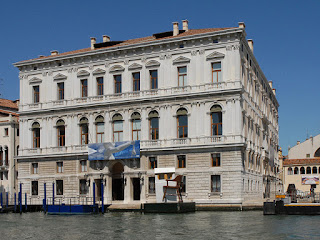 |
| Aulenti was commissioned by her friend Gianni Agnelli to restore Palazzo Grassi after it was acquired by Fiat |
The Palazzo Grassi – sometimes known as the Palazzo
Grassi-Stucky – was designed by Giorgio Massari in the Venetian Classical style
and built between 1748 and 1772. It is located on the Grand Canal, between the
Palazzo Moro Lin and the Campo San Samuele.
It has a formal palace façade, constructed of white marble, but lacks
the lower mercantile openings typical of many Venetian palaces. After it was sold by the Grassi family in
1840, the ownership passed through many individuals until it was bought by the Fiat
Group in 1983, at a time when there was talk of it being demolished. Restored
by Gae Aulenti, it is now owned by the French entrepreneur François Pinault, who
exhibits his personal art collection there.

